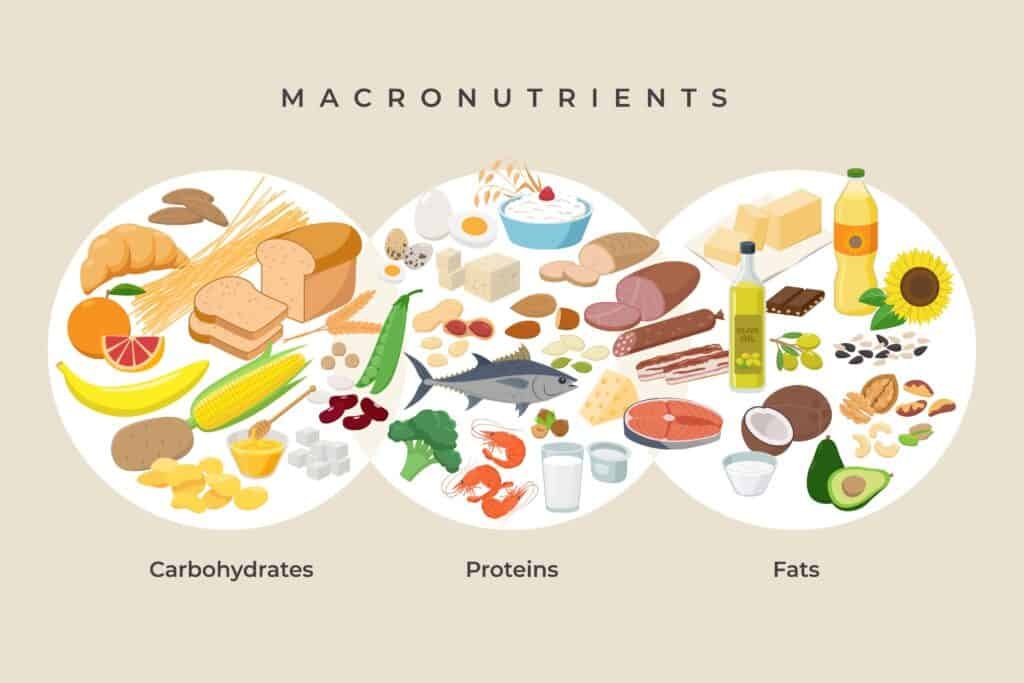
Table of Contents
The most significant Challenge facing a large segment of society today seems to be eating well. Eating well is a natural process, but it begins with getting to know your body’s needs and providing it with those nutrients. We’re going to give you that clear insight and a 3-week challenge to fine-tune your nutrition in this short guide.
What Is Food, Anyway?
Regardless of the fitness nutrition trends, we can conclude these things:
Food enables the body to maintain its weight and ensure that all of its systems and tissues are functioning properly.
Nutrients that the body can produce independently can be non-essential, but essential nutrients also exist.
Food contains those nutrients that the body needs to function and maintain health but cannot produce alone.
Essential Nutrients
You can calculate the caloric value of food by considering its three main macronutrients:
- Protein (4 calories per gram)
2. Fats (9 calories per gram)
- Carbohydrates (4 calories per gram)
Amino acids make up protein. The body uses 20 amino acids, 9 of which are essential (the body cannot produce them on its own).
As mentioned above, protein constitutes the majority of the human body itself. Thus, it is vital for sustained health and wellbeing.
However, fat is a source of fatty acids, some of which have essential properties and may influence many physiological functions.
In the absence of fat, hormonal imbalances, fatigue, and poor nutrient absorption may result.
As a form of energy, carbohydrates are not essential to the body, but they provide the quickest and easiest way for it to use them.
In order to achieve optimal workout performance, carbohydrates are crucial.
What Is Your Requirement?

If we’re talking about macronutrients, we can’t overlook the amounts of macronutrients that should be consumed daily.
In terms of daily protein intake, most people need between 0.6 and 1g of protein per pound of body weight.
For those who do not train, 0.6 grams of protein per pound of body weight is adequate to maintain healthy levels of performance and satiety.
As a more active trainee with substantial muscle mass, you might need 0.8-1g of protein per pound if you strive for a balanced body chemistry and recovery.
Similarly, the ideal daily fat intake is between 0.35 and 0.45g per pound of body weight.
Feel well-satiated without feeling stuffed after your meals with different portions. Experiment with different amounts so you can determine what works for you.
Last but not least, carbohydrate intake ranges between 3-7 grams per pound of body weight and serves to fill any remaining calories (i.e., you need 2000 calories when it comes to calories.
You have 1200 calories from proteins and fats, and 800 calories remain for carbohydrates. Since carbohydrates contain 4 calories per gram (800/4=200), 800 calories equal 200 grams of carbohydrates.
Calories In VS Calories Out
It’s important to understand how you will approach this 3-week Challenge depending on your goals before you jump in.
When it comes to regulating body weight, the most important ratio is the calories in vs. calories out.
Keeping a healthy weight requires a certain number of calories each day, which is referred to as the “Total daily energy expenditure (TDEE).
Find out your TDEE here – https://www.traininginthebay.com/macro-calculator/.
Consuming fewer calories than your TDEE will result in weight loss (this is called caloric deficit).
If you eat more than your TDEE, you are likely to gain weight (calorie surplus).
You will maintain weight if you consume TDEE or close to its amount (called calorie maintenance).
Important note
Losing weight (consuming less than TDEE) results in both fat mass loss and loss of lean body mass (LBM).
Every tissue in the body is defined as LBM, except fat – including bone, nerve, and muscle tissue.
You must preserve lean body mass during weight loss in two ways:
- Maintaining a moderate caloric deficit (400-500 calories per day)
- Getting enough protein (*1g per pound of bodyweight)
- Perform resistance training
Food Choices

The main factor you have to consider is not just the number of calories and macronutrients you consume per day, but that quality food ingredients are being used.
Your nutrition foundation should consist of animal products, as they contain all of the essential amino and fatty acids. However, if you are plant-based, you will need to combine different grains, legumes, and beans, which lack certain nutrients to compensate for those deficiencies.
You should obtain carbohydrates from various sources such as:
- Brown rice
- White rice
- Oats
- Sweet potatoes
- Wholegrain bread
- Wholegrain pasta
These products provide regular energy by containing complex carbohydrates, which are digested gradually.
The 21-Day Challenge
This Challenge is geared toward helping you develop the habits that will enable you to succeed long-term. This 3-week Challenge is not something you complete and then go back to your old habits. Instead, the goal is to help you make this a sustainable change in your life.
Days 1-7 – Determine Caloric Needs, Shop & Meal Prep
This week, you will be determining your caloric needs. You should do this according to your goal. If you are losing weight, you should consume ~300 calories per day below your maintenance level. If you are gaining weight, you should eat ~300 calories per day above your maintenance level.
Once you know your target calories, it is time to figure out your macronutrients. Protein is set at 1 gram per pound of body weight, fat is set at around .45 grams per pound of body weight, and the rest of your calories are allotted to carbs. Next, you need to choose the healthiest foods to eat. As we mentioned earlier, whole foods should be the main source of calories in your diet.
The perfect diet is hard to achieve. For example, to make a balanced nutrition plan, you should take a calorie-counting app such as MyFitnessPal or FatSecret. They provide tools for you to plan your meals in the easiest way.
Finally, it’s time to shop for groceries. Purchase 3-4 days’ worth of food and prepare it in bulk, pack, and refrigerate. You’re now ready to start following your plan without spending too much time on it.
While it may seem unusual at first, you will begin to see how this can become a habit through week one.
Days 8-14 – Monitor & Adjust
In this nutrition plan, you will learn how to gain or lose weight correctly. With the recommended caloric restriction and caloric surplus, you can lose or gain weight without ruining your body composition. However, the calculators are not 100% accurate, so you must monitor your weight and adjust your eating accordingly during the first two weeks.
It is possible to lose one pound per week if you maintain a deficit of 500 calories per day.
If you are losing much more than that, you should increase your food intake, and if you are not losing a pound, you should decrease it.
On the other hand, if you’re looking to gain weight, then it’s recommended that you gain no more than 1-2 kilograms per month. But, again, keep in mind that the goal is to preserve lean tissue, not fat.
Days 15-21 – Bring Diversity
As you begin your first and second weeks, you’re primarily trying to figure out what your body needs in terms of calories.
As we move forward, you will improve your understanding of calories and macronutrients, and you will be able to include more types of foods into your nutrition plan by the beginning of week 3.
Providing you meet your daily needs, you can eat ANY food (including pizza and burgers).
However, you should also emphasize whole foods and make sure the balance favors them, rather than pizza and hamburgers.
The third week is the time to begin getting a sense of what you’re eating and matching your caloric/nutrient needs with the variety of foods available.
Lessons to take home
Nutrition is more than just a way to make your body function. It’s a form of art and enjoyment.
In short, we do not want to jump on and then jump off a diet, but instead, we want to develop sustainable eating habits that provide our bodies with what they need.
It takes about three weeks for a person to develop a new habit, so you should know this is a simple health intervention you can begin performing for yourself RIGHT NOW for the greater good of your physical and mental wellbeing.
Maintain a healthy diet by eating satiating and nutrient-dense foods in the right amounts, as well as staying active to keep your body in great shape.






